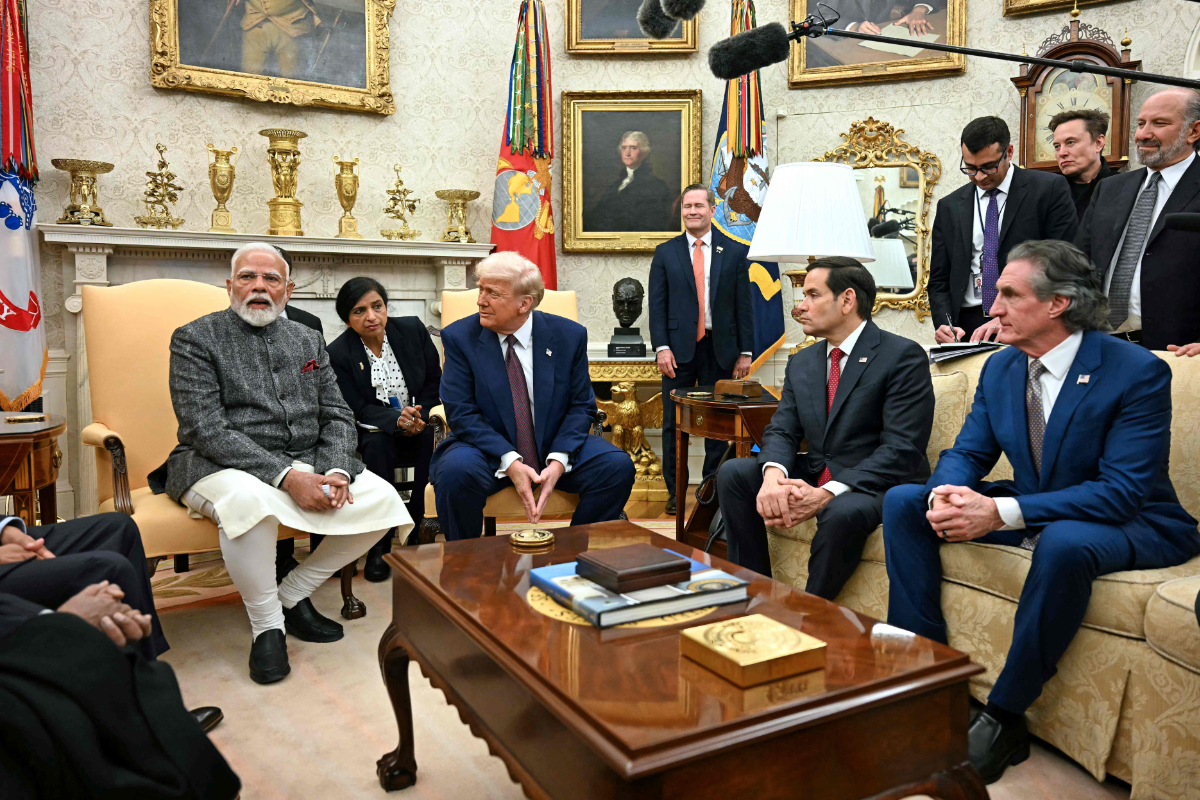WASHINGTON: A group of Democratic governors say they are standing behind President Joe Biden amid increasing calls from some in their party for him to leave the presidential race.
Biden met for more than an hour at the White House in person and virtually with more than 20 governors from his party. The governors told reporters afterward that the conversation was “candid” and said they expressed concerns about Biden’s debate performance last week.
But they did not join other Democrats in urging him to leave the race.
“The president is our nominee. The president is our party leader,” said Gov. Wes Moore of Maryland. He added that, in the meeting, Biden “was very clear that he’s in this to win it.”
A defiant Biden vowed Wednesday to keep running for reelection, rejecting growing pressure from Democrats to withdraw after a disastrous debate performance raised questions about his readiness to keep campaigning, much less win in November.
But increasingly ominous signs were mounting for the president. Two Democratic lawmakers have called on Biden to exit the race while a leading ally publicly suggested how the party might choose someone else. And senior aides said they believed he might only have a matter of days to show he was up to the challenge before anxiety in the party boils over.
“Let me say this as clearly as I possibly can as simply and straightforward as I can: I am running … no one’s pushing me out,” Biden said on a call with staffers from his reelection campaign. “I’m not leaving. I’m in this race to the end and we’re going to win.”
Still, despite his efforts to pull multiple levers — whether it was his impromptu appearance with campaign aides, private conversations with senior lawmakers, a weekend blitz of travel and a network television interview — to salvage his faltering reelection, Biden was confronting serious and mounting indications that support for him was rapidly eroding on Capitol Hill and among other allies.
Rep. Raúl Grijalva, D-Arizona, told The New York Times that though he backs Biden as long as he is a candidate, this “is an opportunity to look elsewhere” and what Biden “needs to do is shoulder the responsibility for keeping that seat — and part of that responsibility is to get out of this race.”
Senior aides said they believe the 81-year-old Biden has just a matter of days to mount a convincing display of his fitness for office before his party’s panic over his debate performance and anger about his response boils over, according to two people with knowledge who insisted on anonymity to more freely discuss The president accepts the urgency of the task — having reviewed the polling and mountains of media coverage — but he is convinced he can do that in the coming days and insistent that he will not step out of the race, the aides said.
Meanwhile, a major Democratic donor, Netflix co-founder Reed Hastings, also called on the president to exit the race, saying, “Biden needs to step aside to allow a vigorous Democratic leader to beat Trump and keep us safe and prosperous.” The statement was first reported by The New York Times.
And all that followed Rep. Jim Clyburn, a longtime Biden friend and confidant, saying he’d back a “mini-primary” in the run-up to the Democratic National Convention next month if Biden were to leave the race. The South Carolina Democrat floated an idea that appeared to be laying the groundwork for alternative choices by delegates during the Democrats’ planned virtual roll call that is scheduled before the more formal party convention set to begin Aug. 19 in Chicago.
On CNN, Clyburn said Vice President Kamala Harris, governors and others could join the competition: “It would be fair to everybody.”
Clyburn, a senior lawmaker who is a former member of his party’s House leadership team, said he has not personally seen the president act as he did on the debate stage last week and called it “concerning.”
And even as other Democratic allies have remained quiet since Thursday’s debate, there is a growing private frustration about the Biden campaign’s response to his disastrous debate performance at a crucial moment in the campaign — particularly in Biden waiting several days to do direct damage control with senior members of his own party.
One Democratic aide said the lacking response has been worse than the debate performance itself, saying lawmakers who support Biden want to see him directly combatting the concerns about his stamina in front of reporters and voters. The aide was granted anonymity to candidly discuss interparty dynamics.
Most Democratic lawmakers are taking a wait-and-see approach with Biden, though, holding out for a better idea of how the situation plays out through new polling and Biden’s scheduled ABC News interview, according to Democratic lawmakers who requested anonymity to speak bluntly about the president.
When Texas Rep. Lloyd Doggett, who called on Biden to leave the race this week, shopped around his move for support from other Democratic lawmakers, he had no takers and eventually issued a statement on his own, according to a person familiar with the effort granted anonymity to discuss it.
Democratic governors say they are standing behind Biden amid questions about his shaky debate
https://arab.news/ju594
Democratic governors say they are standing behind Biden amid questions about his shaky debate
























